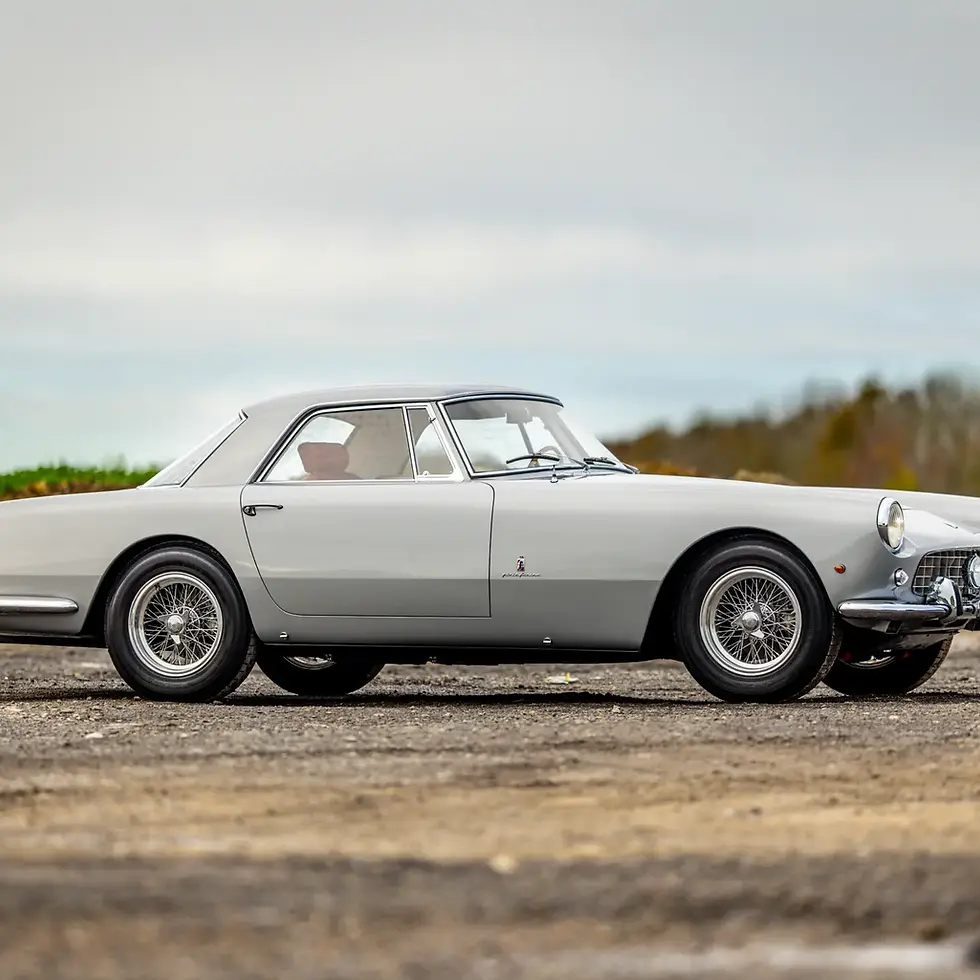IT CAME FROM ANOTHER PLANET
You could be forgiven for not immediately recognizing the striking coupé that stands before you. Smooth and streamlined, subtle and refined, its shape is unlike any of its contemporaries, both beautiful and purposeful in equal measure. Look a little closer and there are clues to the car’s seemingly extraterrestrial origins: its Lancia badging; the Italian firm’s famous Elefantino Rosso logo, emblematic of the marque’s extraordinary rally dominance; and the lines that whisper, rather than shout, of the legendary Fulvia Sport Zagato coupé. Still, only true cognoscenti will know the name. One of the rarest and most special road-going automobiles to ever bear a Lancia crest, the Hyena Zagato combined coachbuilt beauty with one of the most evocative, characterful, and successful drivetrains ever to grace the World Rally Championship.
The Lancia Hyena Zagato owes its existence to Paul Koot, a collector and the Italian firm’s official Dutch importer—a man with an eye for beauty and a head for business. Koot’s interests reached beyond his dealership, Lusso Service Holland, and in the early 1990s, he found himself restoring a fabled Aston Martin DB4 GT Zagato. The project led him to visit Elio Zagato, and the topic of conversation soon turned to the small, affordable Zagato-bodied coupés of the company’s past. From that meeting came a striking two-door study from Zagato’s Marco Pedracini—a beautiful modern reimagining of the Alfa Romeo Giulietta Sprint Zagato ‘Coda Tonda’ of the early 1960s. Koot immediately realized the potential of combining Pedracini’s stylish, aerodynamic coupé with the raw performance of the Lancia Delta HF Integrale, and a legend was born.
Work began immediately on a concept, which was shown for the first time at the comparatively minor Brussels Motor Show in 1992. The car was a hit, and by the time the event hall doors had closed, some 12 orders had been placed, taking the project from dream to reality and firing the starting pistol on series production. Conceived to compete with the Fiat Coupé, Koot and Zagato targeted a run of some 600 Hyenas, each to be sold through Lancia’s existing dealer network—an area in which Koot had unique expertise. But while the Italian giant wasn’t opposed to the idea, it also had no appetite to invest heavily in the project. Rather than integrate production, Koot was forced to use road-ready Integrale Evoluziones as the basis for the Hyena Zagato, sharply increasing overall costs and pushing the final ticket price to a dizzying $75,000—a full $10,000 more than an Acura NSX.
Though eye-wateringly expensive, the car more than lived up to its billing when the first prototype was shown at the 1993 Paris Motor Show. After being prepared as rolling chassis in the Netherlands, the cars were sent to Turin, where they were fully rebodied by Zagato. A lightweight steel structure was installed, which was then fitted with aluminum body panels, with composites used for the doors and bumpers to help save weight. The rear seats were gone, as were the rear doors, while the interior was completely revised, a sea of fine leather and lightweight carbon fiber echoing the spartan competition-inspired cabin of the contemporary Alfa Romeo SZ. The final design was significantly more stiff, compact, and slippery than the original Integrale, not to mention some 440 pounds lighter.
The Hyena’s otherworldly looks were only half the appeal. Beneath the stunning “double-bubble” bodywork lay the celebrated drivetrain of one of the most decorated models in rally history, with its four-wheel-drive configuration and flame-spitting 2-litre twin-cam 16-valve ‘four’ borrowed directly from the all-conquering Delta HF Integrale Evoluzione I. Only in the Hyena, things were made even more radical. Where the road-going version of the rally legend produced 210 horsepower, the coachbuilt Hyena turned the volume up to 11 with a rip-snorting 250 horsepower. That was enough for a 0-60 mph sprint time of just 5.4 seconds—a full 0.3 seconds quicker than the rally exile on which it was based.
Ultimately, though Koot and Zagato had overcome huge obstacles to bring the Hyena to production, it would be factors outside of their control that would finally seal the project’s fate. Just as they were entering the home straight, Lancia called time on the Delta HF Integrale. As the rally icon was shelved, so too was the Hyena, which depended completely on a steady stream of donor cars from the factory. In the end, despite its huge promise, just 24 examples of this special machine would ever be built, making it one of the rarest production cars ever to leave the Lancia works.
LEADER OF THE PACK
This car, the 18th Hyena built, was kept in storage until its import to the UK in 2001 by factory-appointed agents Walkers Garage of Northallerton, North Yorkshire. Finished in red with contrasting black interior, the car was sold to its first owner in April 2002, with whom it would remain for the next 19 years. During this time, it covered barely 30,000 kilometers, appearing periodically at high-profile events, including the Lancia Centenary celebrations in Torino in 2006, as well as in publications including Auto Italia and Viva Lancia.
In late 2021, the car was acquired by the consignor, who promptly tasked renowned Lancia Delta specialist Italiamotorsport Parussini of Udine, Italy, to undertake a full restoration. The brief was to upgrade the car to ultimate specification; something achieved with distinction over the ensuing 12 months. The work performed included a complete strip down and bare-metal respray in Grigio Alloy, complemented by a re-trim in turquoise Alcantara of the same type used on the limited-run “Martini 6” Delta HF Integrale.
Mechanically, the car’s engine was remapped, increasing power from the 250 horsepower typically quoted for a “standard” Hyena to a claimed figure of 320 horsepower. A bespoke exhaust system was fitted to replicate the distinctive note achieved by the Group A Delta Integrale rally car, while both the suspension and brakes were uprated to manage the increased performance. Since completion, the car has covered only approximately 100 kilometers, during which it is said to have performed flawlessly; its odometer figure at the time of cataloguing is just 31,234 kilometers (~19,407 miles).
Exquisitely restored, generously specified, and with impeccable two-owner provenance, this Hyena Zagato represents a unique opportunity to enter the rarefied world of bespoke Lancia ownership. Notably, it is believed to be the first example of this rare and significant model currently residing in the United States. Further enhanced by its prodigious performance, it represents a rare insight into the car the Delta Integrale might conceivably have become—not to mention perhaps the ultimate collaboration between two of the most illustrious names in Italian motoring history.


































































